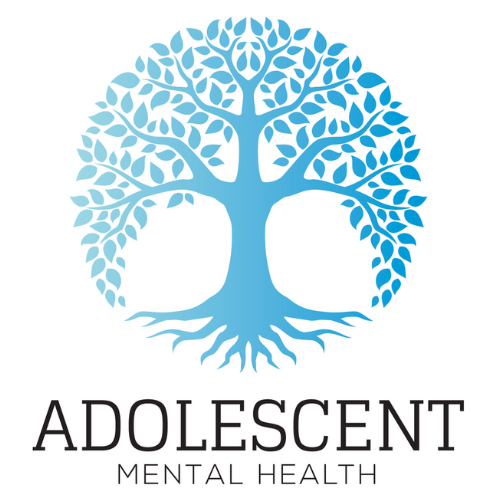Virtual vs In-Person Teen IOPs: A Clear Guide to Choosing the Best Intensive Outpatient Program for Adolescents
Choosing between a virtual and an in-person intensive outpatient program (IOP) for a teen can feel overwhelming, especially when clinical needs, school schedules, and family logistics all collide. This guide explains what an IOP is, who typically benefits, which therapies are included, and the trade-offs between virtual and in-person delivery so parents can make an informed choice. You will learn the core differences in accessibility, therapeutic dynamics, crisis support, evidence of effectiveness, common challenges of virtual care, and practical decision factors that matter for adolescents. The article maps key benefits of virtual IOPs, advantages of in-person programs, common virtual challenges and solutions, and a parent-focused decision checklist to help match a teen’s needs to the right modality.
Throughout, related concepts such as CBT, DBT, family involvement, telehealth platforms, and levels of care are explained to support practical decisions. Read on for clear comparisons, short lists for quick reference, and tables that synthesize attributes to simplify the choice.
What Is an Intensive Outpatient Program for Teens?
An intensive outpatient program (IOP) for teens is a structured level of care that provides frequent, coordinated therapy while allowing adolescents to remain at home and attend school. IOPs work by combining individual therapy, group skills sessions, family involvement, and psychiatric medication management to stabilize symptoms and build coping skills without full residential placement. The primary benefits are greater therapeutic intensity than weekly outpatient care and more flexibility than inpatient treatment; these features support school continuity and family involvement while addressing moderate-to-severe symptoms. Understanding who fits IOP care and the common therapies used next helps caregivers determine whether this level of care is the right step toward recovery.
Teen IOPs are typically recommended for adolescents who need more support than weekly therapy but do not require inpatient hospitalization. These programs commonly serve teens with anxiety, depression, OCD, ADHD, mood disorders, trauma-related diagnoses, and substance use concerns when symptoms impair school or home functioning. Assessment often focuses on risk factors, recent behavioral changes, academic impact, and safety planning; clinicians use this information to place teens at an appropriate level of care. Knowing these common presentations clarifies when to seek an IOP assessment versus alternative care.
Teen IOPs routinely include evidence-based therapies tailored for adolescents, delivered in individual, group, and family formats to target symptoms and functional goals. Core modalities often include Cognitive Behavioral Therapy (CBT) for mood and anxiety, Dialectical Behavior Therapy (DBT) skills groups for emotion regulation, family therapy to repair communication and build supports, and psychiatric medication management when indicated. Treatment plans combine these meronym components—individual sessions, group therapy, family sessions, and medication oversight—into a coordinated plan that targets both symptoms and everyday functioning. The next section examines how virtual delivery changes the accessibility and engagement of these same therapies.
- Who it’s for: Adolescents with moderate-to-severe mental health or co-occurring substance-use issues who need structured, frequent care.
- Typical hours: Programs generally offer multiple hours per week across several days to increase therapeutic dose while preserving home-based living.
- Core therapies: CBT, DBT skills groups, individual therapy, family therapy, and psychiatric medication management.
The list above clarifies the basic IOP model and prepares us to compare how virtual delivery preserves these elements while changing logistics and engagement.
What Are the Key Benefits of Virtual IOPs for Teens?
Virtual IOPs translate the core elements of outpatient intensive care into a telehealth format that emphasizes accessibility, comfort, and continuity of treatment for teens who face geographic or scheduling barriers. By using secure, HIPAA-compliant video platforms, virtual programs maintain privacy while delivering individual, group, and family therapy combined with psychiatric care. For many families, virtual delivery reduces transportation burdens and supports consistent attendance, which in turn improves engagement and continuity of care. Below we outline specific advantages and practical evidence-based considerations that support virtual options for adolescents.
Virtual delivery improves accessibility by removing travel time and expanding reach to rural or underserved areas where in-person IOP slots may be limited. It allows scheduling that fits school and extracurricular commitments so teens can maintain daily routines and reduce academic disruption. Virtual platforms also accommodate families juggling work and care responsibilities, increasing the likelihood of regular attendance and timely medication management. These logistical gains often translate into better program completion and fewer missed sessions.
Virtual IOPs provide a more comfortable and private setting for many teens, which can lower barriers to disclosure and increase participation in group and individual therapy. Being in a familiar environment reduces social anxiety for some adolescents and makes it easier to practice skills in real-life contexts such as home or school. Telehealth platforms are configured to protect confidentiality through secure video connections and private virtual rooms, which supports therapeutic safety and adolescent trust. This sense of safety is especially important when introducing skills-based therapies like DBT.
Current research and program reports indicate virtual IOPs can achieve clinical outcomes comparable to in-person care for many common adolescent conditions, with evidence of positive symptom reduction and sustained engagement. Recent studies and practice data suggest that when programs maintain structured schedules, evidence-based interventions, and active family involvement, virtual outcomes often mirror those of conventional IOPs. While individual study results vary, the overall evidence base supports virtual IOPs as an effective modality when implementation follows best practices. The next subsection explains how family involvement is integrated into virtual formats to support these outcomes.
Intro to benefit comparison table: The table below summarizes how virtual IOPs deliver core benefits in operational terms and typical supporting values.
| Benefit Area | How Virtual IOP Delivers It | Typical Supporting Notes |
|---|---|---|
| Flexibility | Sessions via HIPAA-compliant video; reduces travel | Fits school and extracurricular schedules |
| Continuity | Regular sessions across days each week | Supports consistent attendance and medication follow-up |
| Privacy & Comfort | Home environment lowers stigma and increases disclosure | Familiar setting aids engagement |
| Family Involvement | Scheduled family sessions and caregiver coaching via telehealth | Facilitates parent participation from different locations |
This comparison highlights practical advantages that make virtual IOPs a strong option for families facing logistical barriers and for teens who benefit from home-based care.
Adolescent Mental Health example integration: For families exploring virtual options, Adolescent Mental Health offers a Virtual Intensive Outpatient Program for teens aged 12–17 that delivers 9–15 hours of structured online treatment across 3–5 days weekly. Their model combines individual, group, and family therapy with psychiatric care and uses evidence-based approaches such as CBT and DBT delivered on HIPAA-compliant video platforms. Families can request a clinical assessment and verify insurance coverage to see if this virtual model fits their teen’s needs.
What Are the Advantages of In-Person Teen IOPs?

In-person IOPs provide a structured, supervised therapeutic environment that can be especially helpful for teens who need direct observation, immediate staff support, and intensive peer-group interaction. The physical setting allows clinicians to observe nonverbal behavior, run on-site skills groups, and respond quickly to escalating risk, which increases safety and enables rapid clinical adjustments. Facility-based programs also foster peer bonding through shared space and activities, which can strengthen group cohesion and social learning. Understanding these strengths clarifies when face-to-face care is the preferred choice for adolescents.
In-person programs create routine and accountability through daily schedules, clearly defined check-ins, and staff presence that reinforce attendance and skill practice. This structure benefits teens who struggle with self-discipline, have unstable home environments, or require close monitoring during early treatment phases. On-site staff can coordinate immediate crisis response and collaborate with families and schools in real time, reducing delays that might occur with remote communication. A brief table below summarizes common in-person attributes and their practical value.
| In-Person Attribute | Characteristic | Typical Use-Case |
|---|---|---|
| Structured Environment | Fixed daily routines and on-site supervision | Teens needing accountability and routine |
| Immediate Support | On-site clinicians and staff monitoring | Rapid response for safety concerns |
| Peer Community | In-person group dynamics and social practice | Building social skills and peer support |
This table helps parents weigh which in-person strengths are most relevant to their teen’s clinical presentation and safety needs.
When in-person IOP is preferred, clinicians often recommend it for adolescents with recent hospitalization, active self-harm, significant safety concerns, or when the home environment cannot support virtual participation. The direct observation and immediate access to staff make facility-based care preferable in these higher-risk contexts. The next section addresses common challenges of virtual IOPs and how programs mitigate them to offer safe, effective remote care.
What Challenges Do Virtual IOPs Present and How Are They Addressed?
Virtual IOPs face predictable limitations—engagement demands, potential reduced peer bonding, and technology barriers—but effective programs implement specific strategies to address each challenge and preserve treatment quality. Common solutions include structured schedules, enhanced caregiver coaching, facilitated group norms, smaller cohorts for cohesion, platform training, and contingency plans for connectivity issues. A practical problem-solution framing helps families understand trade-offs and recognize program features that mitigate risks. Below we list common challenges and typical mitigation strategies programs use.
- Self-discipline concerns: Programs use regular check-ins, shortened session blocks, digital reminders, and caregiver involvement to maintain engagement.
- Social interaction limitations: Facilitators use breakout groups, active icebreakers, and optional in-person meetups when feasible to strengthen peer bonds.
- Technology barriers: Providers offer platform training, phone-based alternatives, and privacy guidance to ensure access and confidentiality.
These items summarize program-level fixes; the next paragraphs show how each challenge is operationally managed in practice.
Programs support teens who need external structure by creating predictable daily plans, assigning homework and skills practice, and involving caregivers in accountability routines. Staff implement brief mid-week individual check-ins and behavior contracts when needed to reinforce attendance and practicing skills between sessions. Smaller group sizes and skills-focused activities are used to deepen interaction and allow facilitators to coach social skills deliberately. For technology issues, programs typically use HIPAA-compliant video platforms, provide step-by-step tutorials for families, and offer phone-based options or device guidance to ensure sessions proceed without compromising privacy.
Intro to mitigation summary table: The table below outlines technology and engagement mitigation measures that virtual IOPs commonly employ.
| Challenge | Mitigation Measure | Expected Outcome |
|---|---|---|
| Low engagement | Regular check-ins and caregiver coaching | Improved attendance and homework completion |
| Weak peer bonding | Small groups and structured exercises | Stronger group cohesion and skill generalization |
| Connectivity problems | Phone sessions and platform training | Reduced session disruptions and preserved confidentiality |
How Does Virtual IOP Support Teens Needing Self-Discipline?
Virtual IOPs support teens who struggle with self-discipline by layering external structure, clear expectations, and caregiver-aligned routines to create reliable environmental supports. Programs schedule consistent session blocks, set explicit participation rules, and use digital reminders and in-session engagement tools to maintain focus. Clinicians assign brief between-session practice tasks and follow up with individual check-ins to monitor completion and skill use. These combined measures increase accountability and help adolescents translate skills into daily life.
What Are the Social Interaction Limitations in Virtual IOPs?
Online group settings can limit informal peer interactions and nonverbal cues that naturally occur in person, which may slow the development of organic peer support. To counteract this, facilitators use structured social exercises, small-group breakout sessions, and role-plays that build trust and practice interpersonal skills in a safe environment. Optional hybrid events or periodic in-person meetups can also be arranged when appropriate to deepen connections. These strategies intentionally recreate the therapeutic benefits of peer learning in a virtual format.
How Are Technology Barriers Managed in Virtual Programs?
Programs anticipate connectivity or device issues by providing families with platform orientation, step-by-step guides, and troubleshooting assistance before treatment begins. When real-time video is not possible, clinicians may pivot to secure phone sessions or reschedule critical elements to preserve continuity. HIPAA-compliant platforms and privacy protocols are emphasized, and caregivers are coached on creating confidential spaces at home for sessions. These practical solutions reduce disruption and maintain therapeutic safety and confidentiality.
How Can Parents Decide Between Virtual and In-Person Teen IOPs?
Parents can decide between virtual and in-person IOPs by assessing clinical severity, home safety and privacy, technology access, school scheduling needs, and the teen’s comfort with telehealth. A simple checklist helps translate these factors into a modality recommendation: higher acuity and safety concerns generally favor in-person care, while access barriers and strong school demands may favor virtual options. Seeking a comprehensive clinical assessment ensures that recommendations account for diagnosis, functioning, family supports, and practical constraints. The decision matrix below streamlines these considerations for immediate use.
- Severity & Safety: Choose in-person if there is recent hospitalization, active self-harm, or unstable safety.
- Home Privacy & Tech: Choose virtual if the home offers private space and reliable connectivity; otherwise prioritize in-person.
- School & Schedule Impact: Choose virtual to reduce academic disruption when attendance flexibility is essential.
- Teen Preference & Engagement: Account for whether the teen is more likely to participate and disclose in one format over the other.
This checklist simplifies initial decision-making, and the paragraph that follows explains how a personalized assessment refines the choice.
| Modality | Best For | Decision Factors |
|---|---|---|
| Virtual IOP | Teens needing flexibility and reduced travel | School schedule, rural access, family logistics |
| In-Person IOP | Teens requiring close monitoring and structured routine | Safety concerns, need for immediate staff support |
| Hybrid approaches | Teens who need both structure and convenience | Intermittent in-person check-ins with virtual sessions |
What Factors Should Parents Consider When Choosing an IOP?
Key considerations include clinical acuity, the presence of safety risks, the teen’s ability to engage remotely, the availability of private space at home, technology reliability, and the family’s capacity to support attendance and homework. Parents should also weigh academic impacts and the teen’s social needs, since some adolescents benefit from face-to-face peer interaction more than others. Practical examples—such as a teen with steady home supports and reliable internet versus a teen with unstable housing—clarify how these factors influence modality choice. Using these criteria in conversation with a clinician produces a tailored recommendation that balances safety and access.
How Does Adolescent Mental Health Personalize Treatment Recommendations?
Adolescent Mental Health uses a comprehensive clinical assessment process to determine whether virtual or in-person IOP is the better fit for each adolescent, integrating clinical interviews, family input, and functional assessment. The assessment evaluates symptom severity, risk factors, home privacy and technology access, school obligations, and caregiver capacity to support treatment, and then translates those findings into an individualized treatment plan. Where virtual care is appropriate, the program structures sessions, family involvement, and psychiatric follow-up to maintain safety and effectiveness. Families can request an assessment and verify insurance coverage to receive modality recommendations tailored to their teen’s needs and circumstances.
- Assessment includes clinical interview, family consultation, and functional review to inform level-of-care decisions.
- Personalized plans integrate evidence-based therapies (CBT, DBT), family sessions, and psychiatric medication management when indicated.
- Insurance verification and affordability considerations are addressed during intake so families understand coverage and out-of-pocket options.
This final practical information links decision factors to the concrete assessment steps that result in a tailored IOP recommendation and supports families ready to move forward.









